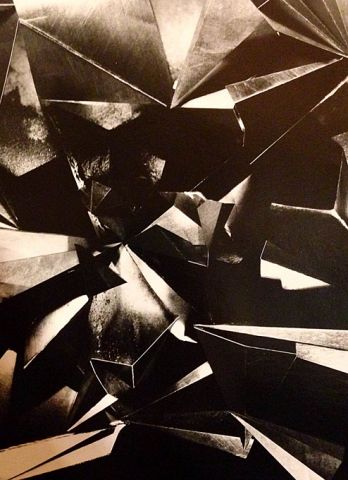<CP>
This morning I visited the Mira Schendel exhibition at Tate Modern. I invited Eddie to join me so we could continue to discuss our project. He declined, saying that it’s a mistake to visit exhibitions while making your own work, that you can ‘leave yourself open to influence and lose the ability to think independently’. I ignored him and went anyway, fairly confident that I would still be able to function cognitively afterwards. I spent a long time with some of Schendel’s work, notably with the pieces that touched on issues of language, transparency, mathematics and communication. Her work on paper is often delicate and ephemeral, yet also graphically rich, incorporating the contrasting sensibilities of a monochrome palette and almost-invisible surfaces. Eddie and I had spoken a lot about our ‘common ground’ when we met on Sunday, the things that our disparate practices share. Our key words for the next two weeks and our first session in the studio together are LIGHT and LINE, and Schendel’s exploration of ideas of ‘transparency’ and ‘meaning’ gave me much food for thought in terms of our approaches to articulating light (or ‘seeing’), and our ongoing discussion point of SUBJECT.
When Schendel used letterforms in her work, they were taken out of context, removed from a word or sentence and rotated, repeated, dislocated from meaning. It is possible to see them as abstract forms and enjoy, instead of their literal identification, the subtleties of line thickness, spatial arrangement and form. As shapes within compositions they feel simple and familiar yet are consciously placed with a sophisticated understanding of space and order. Where the works involve empty spaces or transparent materials – a nothingness or void – they are active through their vacuity. I spoke to Eddie on my way home afterwards about how the Schendel exhibition is a good illustration of how subject or investigation could be identified in a work’s formal qualities of line, shape, and exploration of space, and that even when we approach a recognisible element such as a letterform as the starting point for a piece of work, its role in the work can shift and be overwritten with other readings or ways of seeing. We spoke of how subject can perhaps be a more fluid identifier for what happens in our work than we had discussed on Sunday. I’ve given him the Schendel catalogue to look through before our studio session – I hope he doesn’t prove himself right and lose the ability to think independently after seeing it.

